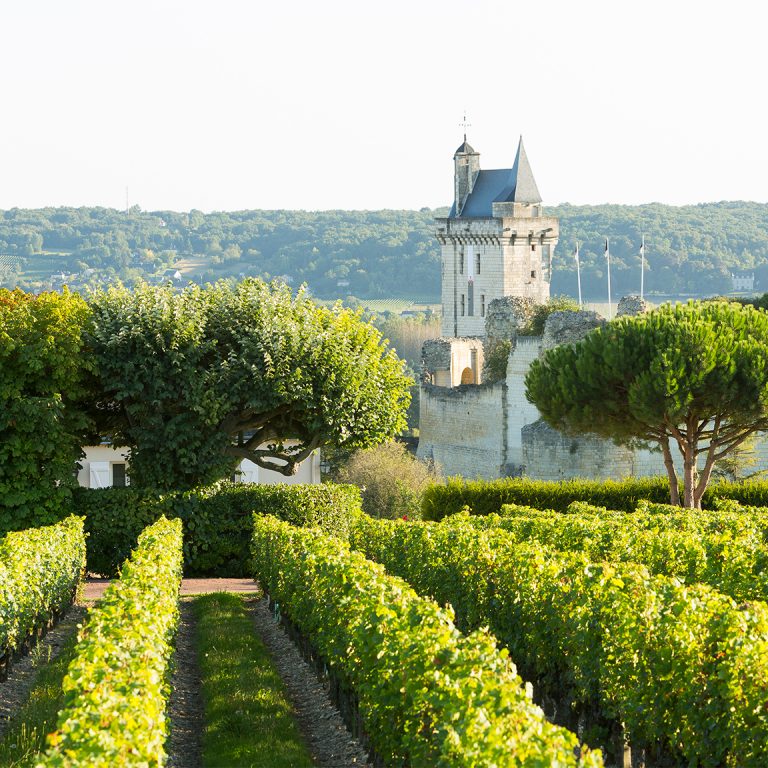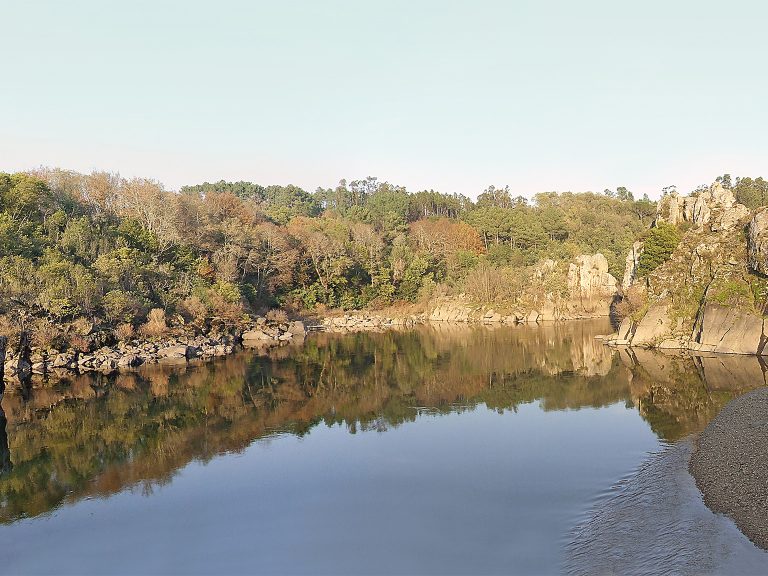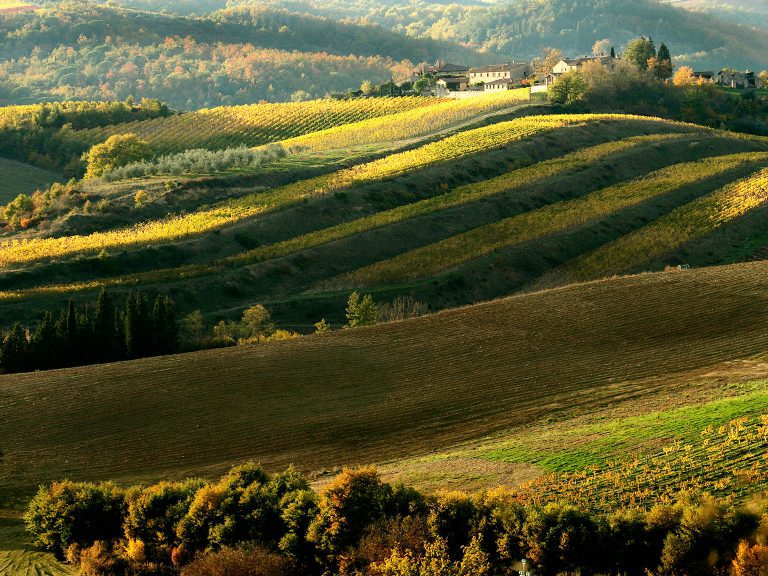This advertising content was produced in collaboration with our partner Loire Valley Wines.
The Loire Valley is known as the cradle of the French language, as well as Le Jardin de la France, the Garden of France. The landscape of low hills is punctuated by grand châteaux of the 15th, 16th, and 17th centuries, all connected by the slow-moving waterway that stretches into the heart of the country.
While the region is France’s third largest wine-producing region by volume (and the largest for AOC-based white wine), the Loire Valley manages to provide incredible focus, consistency, and quality. Sommeliers and wine buyers have come to depend on the region’s 51 official appellations for a variety of refreshing sparkling wines, crystalline whites, playful rosés, profound reds, and long-lived sweet wines often tinged with noble rot.
Two thousand years of continuous viticulture has helped forge this reputation, but so has a region-wide effort to embrace sustainable viticulture and terroir-centric winemaking. Today, 30% of the valley’s vineyards are either farmed sustainably or organically—a figure that increases each year. This forward-thinking ethos has secured acclaim for present-day vintages, but more importantly, promises a bright future for the Loire’s wine industry.

Don’t miss the latest drinks industry news and insights. Sign up for our award-winning newsletters and get insider intel, resources, and trends delivered to your inbox every week.
History
Viticulture in the Loire Valley dates back to the 1st century and the Roman empire. By the Middle Ages, the valley became an important bridge between northern and southern European cultures, a position that would later help the Loire forge the national identity of France.
The various kings and nobles of 16th and 17th century France turned to the Loire for their hunting grounds and built lavish palaces—one of the valley’s major draws for present-day tourists. While the nobility promoted the region’s wines far and wide, it was the Benedictine and Augustinian monks who preserved viticultural traditions throughout this time frame. Phylloxera was particularly virulent with the Loire’s vineyards, but with modernity, the region was resurrected, and it began to find a critical following in the restaurants of Paris and beyond. Today, roughly 20% of the region’s wines are exported; the U.S. is the number one export market for Loire Valley wines.
Geography
The Loire River’s importance to France cannot be understated. From its source high in the Massif Central to its wide, sweeping conclusion in the Bay of Biscay, the river flows through the historic heart of the country, and forms the longest water course in the nation.
Vineyards line much of the right and left bank, as well as several key tributaries, such as the Cher, the Vienne, the Loir (note the slightly different spelling), and the Maine. All of this water adds to a temperature modulating amount of humidity that helps to define the various terroir, especially as you get closer to the sea.
Furthermore, a tapestry of soil types helps to create opposing forces from one hillside to the next. From crumbly flint to chalky tuffeau, impermeable granite to decomposed volcanic rock, these soils define the sensory identity of many Loire Valley wines. The diversity of geography manifests itself in the Loire’s dozens of sub-regions; no other French region features such a concentration of AOCs supporting so many completely different grapes.
Grapes
Throughout its course, the Loire River encounters, and even creates, numerous microclimates suitable to a wide array of wine grapes—eight major varieties and 24 in total. While the principle varieties are detailed below, sommeliers can explore such only-in-the-Loire varieties as Grolleau, Pineau d’Aunis, Orbois, and Romorantin.
Melon de Bourgogne
Chenin Blanc
Chenin Blanc is native to the Loire valley and the star of the Middle Loire (Anjou and Touraine regions), where it produces some of the most age-worthy white wines in the world, both dry, sweet, and sparkling. The best-known Chenin Blanc wines hail from Anjou, Savennières, Saumur, and Vouvray, but numerous appellations continue to embrace the variety. Known for its high acidity and extract, Chenin Blanc can yield a wild spectrum of aromas ranging from pear, apricot, and quince to hazelnuts and marzipan with age. In Crémant de Loire, Chenin Blanc’s presence in the cuvée lends these traditional-method sparkling wines a unique aromatic twist not found in other crémants. When affected by the noble rot, Botrytis cinerea, the grapes manage to thread the needle between richness and vivacity.
Sauvignon Blanc
In the Middle and Centre Loire, Sauvignon Blanc takes on a vibrancy and energy that has inspired generations of wine lovers worldwide, especially those from Sancerre and Pouilly-Fumé, known for their signature aroma of smoke or gunflint. In addition to these sought-after wines, look for 100-percent varietal bottlings from Quincy, Reuilly, Touraine, and Menetou-Salon.
Cabernet Franc
This was the Loire’s first red grape variety, introduced into the region in the 11th century, with its signature notes of black cherry, violets, black-pepper spice, and tobacco leaf, the wild and distinctive red wines of Cabernet Franc from the Loire are frequently identified in blind tastings. Many of the most noteworthy wines come from the Middle Loire—where it is the principal red grape—at such laudable appellations as Chinon, Saumur, Anjou, and Saint-Nicolas-de-Bourgueil. Rosé hailing from the Loire’s Cabernet Franc can be fresh and fruity with a touch of minerality, such as Cabernet d’Anjou.
Gamay
The Loire has long been an important production center of Gamay wines, particularly in Anjou, Touraine and scattered holdings in the Centre-Loire. Unlike in Beaujolais, a significant amount of Gamay is used for the cuvées of sparkling wine production. It is often vinified as a single variety.
Pinot Noir
In the Loire, Pinot Noir is a versatile workhorse grape, appearing in vineyards for the purposes of making red wines in Sancerre and Reuilly, and contributing to the blends of rosé and sparkling wines up and down the valley. Loire Valley Pinot Noir is light bodied and moderate in tannin and pigment.
Subregions and Appellations
To understand the Loire Valley’s wine regions, one must first take stock of the climate. Humidity-laden air from the Atlantic Ocean can reach as far as the city of Tours, where the Touraine appellations are found, some 160 miles away from the sea. The maritime air creates a continuum of temperature modulation across the region’s vineyards—the further you go upstream, the more continental the climate becomes, with wider diurnal temperature swings.
Because of this, the climates and characteristics of each appellation are unique. In fact, the only common threads across this vast belt of viticulture are diversity (3,600 winegrowers and 410 négociants across 51 appellations and six PGIs) as well as the wines’ versatility at the table.
Pays Nantais
The lowest elevation vineyards of the Loire Valley can be found in the Pays Nantais, a region anchored by the city of Nantes. Here, Melon de Bourgogne thrives in Muscadet and Muscadet Sèvre et Maine, with many producers choosing to age their wines sur lie (on their yeast) for a rounder, almost-creamy mouthfeel. There are three crus of note in Muscadet Sèvre et Maine: Clisson, Gorges, and Le Pallet.
Anjou
Centered around the city of Angers and the confluence of the Loire and Maine Rivers, Anjou boasts an enormous diversity of wine styles. The mineral-driven, dry and sweet Chenin Blanc wines of Savennìeres, Savennìeres Coulée de Serrant, and Savennìeres Roche Aux Moines are some of the most age-worthy white wines in the world, with high extract and aromas of citrus, quince, hazelnut, and white flowers. The sweet wines of Bonnezeaux and Coteaux du Layon are also paragons for the category, while a spectrum of rosé wines from Cabernet d’Anjou (sweet), Rosé d’Anjou (off-dry), and—an appellation shared with Saumur—Rosé de Loire (dry) rounding out the offerings.
Saumur
Saumur—along with Anjou and Touraine—is the Loire’s most important producer of sparkling wine. Crémant de Loire represents a compelling alternative to Champagne for many wine professionals given its high quality-to-price ratio. Centered principally on a cuvée of Chardonnay and Chenin Blanc (with seven potential blending partners including Pinot Noir and Cabernet Franc), Crémant de Loire requires at least 12 months of aging on the lees, and yields a wine of superior quality.
While the Saumur subregion is the largest producer of sparkling wine, it is also a vast and rich viticultural landscape known in equal measure for still red and white wines. Saumur Blanc is a Chenin Blanc-focused dry wine while Saumur Rouge is made primarily from Cabernet Franc, with two terroirs recognized as distinct AOCs: Saumur-Champigny and Saumur Puy-Notre-Dame.
The area’s famous tuffeau rock lends both the white and red wines an edge of minerality. No visit of the area’s wineries is complete without a tour of one of the underground cellars in Saumur, which are carved into the tuffeau, often the result of ancient quarries.
Touraine
Further upriver lies the next key subregion of the Loire, and one of its most viticulturally diverse: Touraine, with the city of Tours as its beating heart. Some of the finest Cabernet Franc wines in the world hail from Chinon, where vineyards thrive in a various geological landscape of tuffeau, clay, gravel and sand. While white wines from Sauvignon Blanc and Chenin Blanc can be made here as well, Chinon is volumetrically the Loire’s top producer of red wines, and an excellent source of rosé as well. Neighboring Saint-Nicolas-de-Bourgueil also makes appealing red wines from Cabernet Franc.
Further upriver, the iconic village of Vouvray has come to be associated with the pinnacle of Chenin Blanc, with wines vinified along a spectrum from dry, demi-sec to sweet and sparkling.
Centre Loire
Where would Sauvignon Blanc be without the category defining appellations of Sancerre and Pouilly-Fumé in the Centre Loire? Here, on the flint- and marl-based soils surrounding both banks of the river, Sauvignon Blanc reaches its apogee with bracing acidity and bright aromatics of gooseberries, grass, orange peel, and smoke. Nearby and further away from the river, Quincy, Reuilly and Menetou-Salon offer emergent producers and exceptional value, particularly for their Sauvignon Blanc. Sancerre and Menetou-Salon also make some of France’s most surprising versions of Pinot Noir.
What’s New in the Loire Valley
Natural Wine
While natural wine has come to redefine many appellations across France, the Loire Valley has long been bullish on organic and biodynamic viticulture, as well as minimal intervention in the cellar. In fact, many producers now heralded for their expressive wines are merely making wine how their ancestors always did. What is new about this development is the bright spotlight that consumer interest has shone on the area’s natural wines, and how this interest and curiosity has elevated certain styles of wine, such a pétillant, an ancestral method approach to sparkling wine with lower atmospheric pressure, cloudier tones, and more earthy, musky aromas.
Reds on the Rise
Another key development has been the ascendance of red wines in the Loire. Despite having a parentage relationship with Cabernet Sauvignon, Cabernet Franc has long stayed in the shadows — not any longer. Driven by increased sommelier interest, a desire by consumers for lower alcohol, and several noteworthy vintages, Cabernet Franc from the Middle Loire is experiencing a renaissance. Buyers are also increasingly realizing that Burgundy is not the only stronghold for French Pinot Noir and Gamay Noir.
Underdog Appellations
Cool-hunting sommeliers and savvy consumers on the lookout for the next big thing in wine increasingly are turning their attention to some of the Loire’s historic yet underappreciated appellations. Crémant de Loire, Muscadet Sèvre et Maine, Saint-Nicolas-de-Bourgueil, Quincy, and Menetou-Salon have recently proven to American consumers that the Loire Valley is much more than just Sancerre, Vouvray, and Chinon. With its incredible variety and value-oriented prices, these regions will remain mainstays on wine lists for years to come.
The Ascent of Crémant de Loire
From Alsace to Bordeaux, interest in traditional-method crémant sparkling wines has grown in recent years, but especially in the Loire Valley, where the presence of Chenin Blanc adds a unique dimension to the wines. While these wines have a long and storied tradition in the valley, their recent growth in sales has been sudden and intense. On-premise and off-premise wine buyers have come to count on the category for its elegance, intense and luxurious aromas, and—perhaps most importantly—exceedingly sound value.









